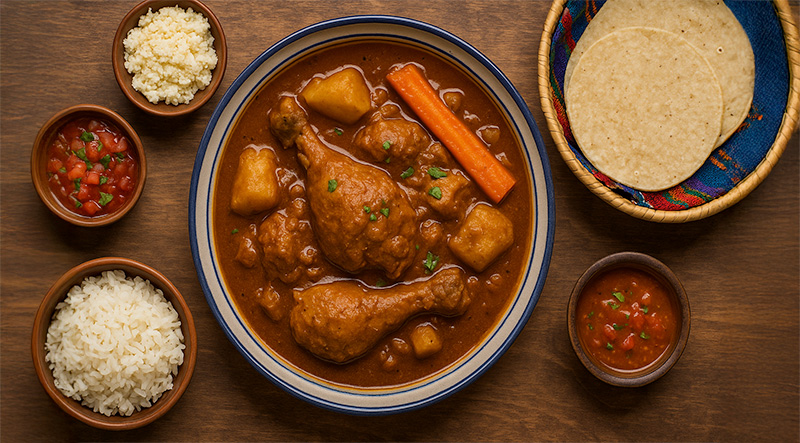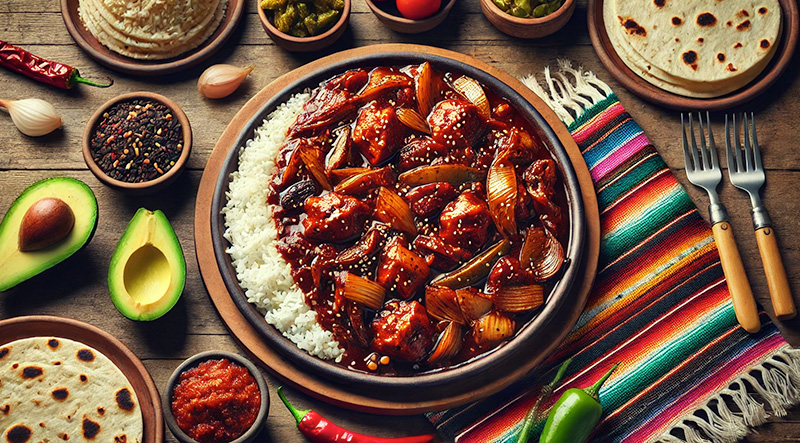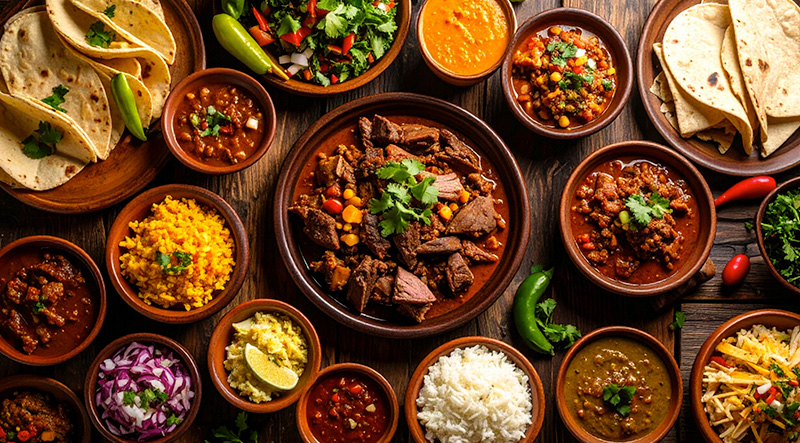Guatemala's national dish, pepián, is a veritable feast for the senses—bold, fragrant, and steeped in centuries of tradition. Tender pieces of beef or chicken are combined with a highly spiced sauce made from toasted sesame seeds, pumpkin seeds, chilies, and tomatoes to create a thick, flavorful stew with a rich, nutty profile that is unmatched. Pepián, which is typically served with rice and freshly made tortillas, combines Spanish and Mayan influences to create a dish that is both soul-satisfying and unforgettable. It is a warm embrace of Guatemalan history in every bite. Read More...
The History of Pepián, Guatemala’s National Dish:
Pepián, a rich and aromatic stew thickened with toasted seeds and chilies, is widely celebrated as the national dish of Guatemala. With deep roots in Mayan culinary traditions and strong influences from Spanish colonization, Pepián represents the very heart of Guatemala’s cultural and gastronomic heritage. More than just a meal, it tells the story of a nation built on a fusion of indigenous and colonial worlds.
Mayan Roots: The Origins of Pepián:
Long before Spanish ships arrived on Central American shores, the Maya civilization flourished across Guatemala. The Maya cultivated maize, tomatoes, squash, and chilies—ingredients that still form the foundation of Guatemalan cuisine today. They also mastered the art of grinding seeds, nuts, and spices into sauces, a technique that gave birth to the idea of thickened stews such as Pepián.
Pepián’s earliest version was likely a meat or vegetable stew flavored with local herbs and ground pumpkin seeds (pepitas), ingredients abundant in the region. This seed-based sauce, enriched by chili and spice, was not only flavorful but also symbolically significant in Maya rituals and celebrations.
Spanish Influence and Culinary Fusion:
With the arrival of the Spanish in the 16th century came new ingredients and cooking methods. Spices like cinnamon, cloves, and black pepper were introduced, along with onions, garlic, and domesticated meats such as chicken and beef. The Spanish also brought cooking vessels that allowed for stews to simmer slowly over heat, enhancing their flavor and texture.
These colonial influences transformed indigenous dishes into hybrid recipes that reflected both worlds. In Pepián, this blending is evident in the pairing of Old World spices with New World ingredients like tomatoes, chilies, and pumpkin seeds.
A Dish for Celebration and Family:
Traditionally, Pepián is slow-cooked over several hours, allowing the flavors to meld into a thick, bold sauce. The dish is most commonly prepared with chicken or beef, though pork and vegetables are sometimes used. The sauce is made by toasting pepitas, sesame seeds, dried chilies, and tomatoes, then blending them with spices into a dense paste that coats the meat.
Pepián is typically served with white rice, fresh corn tortillas, and occasionally avocado slices or pickled onions. It’s a staple at family gatherings, religious festivals, and especially during Semana Santa (Holy Week) and other major holidays, when food plays a central role in cultural expression.
Pepián in Modern Guatemala:
In today’s Guatemala, Pepián remains a culinary touchstone, passed down from generation to generation. While some modern versions are simplified, the traditional preparation—with its distinctive toasty flavor and reddish-brown hue—is still revered. You’ll find Pepián served in households across the country, from rural kitchens to fine dining restaurants in Antigua and Guatemala City.
The dish has also gained international recognition. Travelers often seek it out as a must-try when visiting Guatemala, and Guatemalan communities abroad continue to cook it as a reminder of home.
A Dish of Identity and Pride:
Pepián is more than Guatemala’s national dish—it’s a symbol of national identity, resilience, and culinary ingenuity. Every spoonful carries the story of a people who have preserved their roots while embracing new traditions. From ancient Mayan rituals to modern-day Sunday dinners, Pepián remains a flavorful thread that weaves Guatemala’s past and present into one delicious heritage.
Toast the seeds and spices:
Char the vegetables:

Toast the chilies and tortilla:
Make the sauce:

Brown the chicken:
Simmer the stew:

Adjust and serve:
This thick, nutty, and spicy stew is a bold reflection of Guatemala’s culinary soul—perfect for gatherings, celebrations, or a cozy meal that connects you with centuries of tradition.
The total preparation and cooking time for Pepián is approximately 2 to 2½ hours. Prepping the ingredients—such as roasting the vegetables, toasting the seeds and spices, soaking the chilies, and blending the sauce—takes about 45 to 60 minutes, depending on your experience and kitchen setup. Browning the chicken and simmering the stew in the rich, spicy sauce takes an additional 45 to 60 minutes, allowing the flavors to meld and the meat to become tender. Though time-intensive, the layered preparation is key to achieving the deep, complex flavors that define this traditional Guatemalan dish.
A single serving of **Pepián**, based on the recipe provided and assuming six servings, contains approximately **500 to 650 calories**. The calorie content comes primarily from the **chicken (about 250–300 calories)**, the **pepitas and sesame seeds (around 100–120 calories)**, and the **rich sauce made from roasted vegetables and dried chilies**. Additional calories come from the **corn tortilla blended into the sauce (about 50–70 calories)** and a small portion of **cooked white rice (about 100–120 calories)** typically served on the side. Optional ingredients like potatoes or avocado could increase the total slightly, making Pepián a hearty and satisfying dish that’s both nutritious and deeply flavorful.







